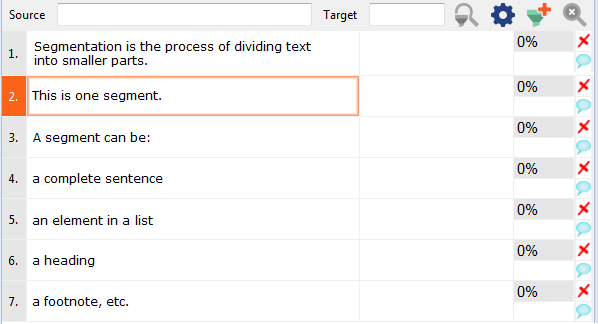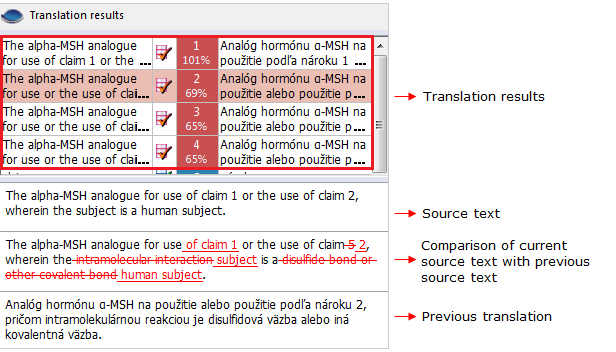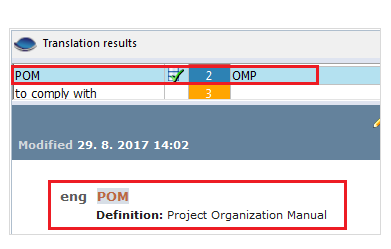Software tools for effective translation and localization of content
LEXIKA 18.09.2018 For Customers Reading time: 5 min.
18.09.2018 For Customers Reading time: 5 min. 
Translation and localization don’t have to be complicated, expensive and time consuming processes. If you have the right tools you can translate and localize texts, technical documents, or websites and software effectively, neatly, and of a high quality. Thanks to modern technologies, you can decrease the costs by up to 35 per cent, while maintaining all of the mentioned positives. In this article, we’ll take a look at how it all works.
You can start with little effort and without any additional costs for you, by using two effective software tools, which every translator or translation agency should have at their disposal. These are the technologies of translation memory and term base.
Translation memory
Firstly, we would like to briefly explain what a translation memory (abbr. TM) is. A translation memory is a database containing the original – source text and its individual translations divided into smaller parts, so-called segments. A segment can be a complete sentence, element in a list, heading, footnote, etc. The database stores the source text and the corresponding translation in the, so-called target language, which you can automatically use in subsequent (future) translations.

The advantage of using a translation memory is that the more documents you translate, the bigger the database itself gets. And a bigger database means that you can use previously translated or recurrent parts of texts in your future translations more often. You don’t need to translate them again. A translator (either the same translator or a different one) can translate identical or very similar parts of a text in the same way they were translated in the past. These partial benefits combine to reduce the time needed to finish the translation. And as we all know, time is money - therefore a faster translation can be cheaper.
A translation memory is most effective when the text contains identical or similar parts, most notably when translating legal, financial, technical, or medical documents. A translation memory can noticeably cut the time and financial costs for localization and translation of product manuals, instructions for use and maintenance, but also for the localization of software, portals, web services, etc. A translation memory is also useful if you amend or update texts, as it is possible to “recycle” previous parts of the translation from the database.
How does a translation memory work?
Most translation memory tools will show the translator a match rate with an earlier translation expressed as a percentage. For an easy explanation: for example, a 101% match means that both the text and the context of a translation are identical with the previously translated text and its context. At a lower match rate, for example, of 99 – 1%, the software shows you what exactly differs from earlier translations and what you need to check, change, or translate from scratch. The higher the match rate the quicker you can translate, update, or check the text. Depending on the language, it is usually effective to fix matches that are higher than 75%.

Nowadays, the translation memory technology is the essential tool to be used by professional translators and translation agencies. It can not only increase efficiency, but also the quality of translation, allowing the translator to check the finished translation more quickly and identify possible flaws.
Quality assurance, translation uniformity and the use of correct terminology are safeguarded by taking advantage not only of translation memory tools, but also of term bases.
Term base
What is a term base? A term base (abbr. TB) is a compilation of bi- or multilingual industry specific and company or product related terms.
At first glance, it may look similar to the translation memory, but it’s not the same. A translation memory is created naturally over the course of a translation, while a term base is a list of meticulously selected terms, the purpose of which is to increase the precision and uniformity of translation. It is possible to create it in advance and keep adding to it while translating.
The creation and use of term bases is especially important when translating technical, medical, legal, and other documents, in the case of which it’s necessary to pay considerable attention to translation accuracy.
Those translators who have access to a term base can always use correct, approved terminology or avoid the use of unwanted words when translating.

How does a term base work?
When a translator translates a text containing a term already defined in the term base, the software alerts them and proposes a translation of the term, which they can use in their translation. A term base shows the translators which terms are new, approved, forbidden, or preferred together with their additional description, definition or picture.

Therefore, translators work more efficiently without having to repeatedly research and verify the correctness of the term. The use of term bases noticeably enhances the uniformity of translations and the overall quality of the translated content, while also reducing the time needed for additional proofreading or editorial revisions.
The benefits for translation agencies
Translation memories and term bases are very helpful not only for individual translators, but also for translation agencies.
In the case of computer-assisted translation, quality assessors and project managers can more effectively check its completeness and consistency, including spelling, punctuation, numerals, etc. If a term base is used alongside the translation memory, checking the correct use of terminology is also part of quality assurance.
At LEXIKA, we use several types of CAT tools, but we see the most significant asset being the use of server technology, allowing us to share translation memories and term bases with all translators and revisers working on a project at the same time. If it’s necessary to make a change in the text, the translation memory or to add a term to the term base, it will immediately and automatically reach all the translators involved. We only require our clients to send us their materials in an electronically processable form. Clients are not charged extra for computer-aided translation.
If you want to find out how to increase the quality, and decrease the delivery time and costs of your translation and localization projects, contact us for a non-binding quotation or free consultation.

We understand that when people communicate better, everything runs more smoothly, so we’ve made it our mission to help you get the best out of your business.
Share it!